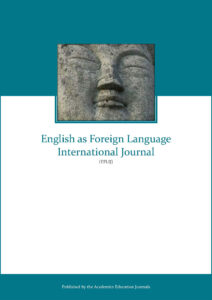IJLLD Submission Guidelines
The International Journal of Law, Language & Discourse (IJLLD) is a fully peer-reviewed journal, reviewed by a team of experts from all over the world. The Journal welcomes submissions written in different varieties of world Englishes: our reviewers and editors come from a wide variety of cultural and academic backgrounds and no distinction is made between native and non-native authors. As a basic principle, the International Journal of Law, Language & Discourse does not define competence in terms of native ability, but we are a strictly reviewed journal and all our reviewers expect a high level of academic and written competence in whatever variety of English is used by the author. Every effort will be made to accept different rhetorical styles of writing. IJLLD also makes every effort to support authors who are submitting to an international journal for the first time. While major revisions may be requested, every effort is made to explain to authors how to make the necessary revisions.
Each submission is first assessed by the publisher or Chief Editor or a Senior (Associate) Editor before being sent to an Editor who supervises the editorial review process.
There is no word minimum or maximum. Typical articles run from 5,500 to 11,000 words.
Authors should note that it may take 10-12 weeks for a review to be completed. All authors who comply with the requirements below receive an acknowledgment upon receipt to confirm the safe arrival of the paper. Notice of results of an initial screening should be received within 5-10 working days. If you do not receive a confirmation, contact us at chief-editor@academics.educaion
**Authors must include an undertaking in the webform at submission that the “…paper has not been published in any other journal nor is under review by any other journal.”
**It is also important to point out early in the paper (and in the webform message) what is new about your study — a common reason given by editors for rejection is that the paper doesn’t contribute anything new or relevant to a broad international audience. Routine studies, even if efficiently conducted, may pass exams but they do not get published unless they have something new and relevant to say. Identify the “gap in knowledge” / “literature gap.” Replication studies are permissable: what specifically is being challenged, why is this suspect?
There are two basic categories of paper:
* Full research papers, which report interesting and relevant research. Ensure that you point out in your discussion section how your findings have broad relevance internationally and contribute something new to our field of inquiry.
* Non-research papers (“Papers from the Profession,” “Reports & Summaries,” “Forum,” “Reviews,” etc.), providing detailed, contextualized information of interest to scholars and working professionals. Reviews of books or other materials should be discussed with the editorial team prior to submission.
Authors are encouraged to conform with international standards of drafting, but every effort will be made to respect original personal and cultural voices and different rhetorical styles. Papers should still be fully-referenced and should use the APA style (American Psychological Association Publication Manual, 7th edition). Do not include references that are not cited in the manuscript, i.e., submit a list of references (APA style), not a bibliography. The Purdue Writing Lab provides a helpful resource on APA7th.
All submissions will be checked for potential plagiarism using diverse methodologies. Authors will be informed if plagiarism is found, and will have the opportunity to respond to such findings.
A typical paper would include components similar to the following:
- Abstract (fewer than 200 words)
- Keywords (generally not more than 5 or 6)
- Introduction (with an overview of the topic’s relevance and the paper’s focus)
- Research Question(s) (perhaps included in the Introduction?)
- Literature Review (headings may reflect the content of the review rather than “Literature Review”)
- Methodology (participants, materials, data collection, analytical procedures)
- Analysis/Findings (with sub-sections that clearly address the research questions)
- Discussion/Evaluation (with a brief summary of the findings and implications)
- Conclusion (discussion and conclusion can be combined)
- Study Limitations (generally included in the Conclusion)
- Future Studies (generally included in the Conclusion)
- Endnotes (discouraged, use only as required, in-text references are preferred)
- References (APA style) match the in-text citations (not a ‘Bibliography’)
- References include DOI (where available) in the https://doi.org/10.xxx.xxxx.x format (hyperlink activated)
- No links to file-sharing systems (ResearchGate, SSRN, Academia, etc)
- Appendices (optional)
No special page formatting is required for the initial submission, although working with our template is welcomed. Upon final acceptance the author is expected to participate in the page layout process consistent with our template.
Each submission must include a 50 – 150 word bio statement for each author. IJLLD uses a double-blind review process following the initial editorial review (i.e., the referees won’t know who the author is, or vice-versa). The author bios and an email address for each author must be included on the first page of the submission document (the article). The title and abstract, etc begin on the second page. The front (first) page will not be shared with reviewers: all contents after the front page should be anonymized.
Typical reasons for immediate rejection (not advancing to Peer Review) include:
- mismatch with journal scope (intersection of Law & Language)
- failure to follow journal submission guidelines
- major flaw in study design: poor research question / inappropriate methodology
- incomplete/inappropriate Introduction/Literature/Conclusion
- plagiarism, previously published
Other concerns which may impact advancement include:
- poor writing/organization, language/spelling issues
- lack of significance
- lack of originality
- poor visuals / copyright concerns
Summary for preliminary acceptance for review
- Indicate the ‘no prior submission’ undertaking
- Specify if your paper is a full research paper or a non-research paper
- Summarize what is new about your study
- only MSWord Document format (.doc, .docx) is accepted: Times New Roman size 12, text is spaced 1.5 between lines, underlines, italics, bolds only where required in the final document
- Provide biographical statements and emails for each author on the first page of the document
- Use the APA (6th or 7th) style system
- Tables are included in the manuscript at the point they are intended to appear, preceded by a table caption
- Figures are included in the manuscript at the point they are intended to appear, followed by a figure caption
- Footnotes are strongly discouraged, Endnotes should be limited in number and length.
- Identification of victims, witnesses, litigants, defendants and participants through their proper names should not be included in submissions. Pseudonyms or other forms of anonymized, abbreviated, or fictionalized names should be employed as much as possible (e.g., John, Mr. C.). The names used in titles of cases should not include “Given” (first) names (e.g., State v. Smith).
- All permissions have been cleared for any copyrighted materials.
- Advise of any change in email address promptly.
Ethical Principles for Authors
- Present an accurate account of the research you have performed and give sufficient details and references to public sources of information to permit your peers to repeat the work.
- Give credit to other people who have helped or influenced your work.
- Obtain permission to reproduce figures, tables or extensive extracts from the text of a source that is copyrighted or owned by someone else, and send copy of that permission to journal editors.
- Obtain permission to cite personal communications.
- Do not include plagiarized, obscene, libelous or defamatory material.
- Cite all relevant references.
- Declare any conflicts of interest.
- Declare sources of research funding, including any grant ID numbers.
- Do not submit the same or similar articles to any other journal (self-plagiarization).
- Mention to IJLLD editors any relevant articles that you have submitted or that are in press.
- Make sure that co-authors review the manuscript before you submit it and that all authors agree on the order in which authors will be listed.
- Do not list people as co-authors unless they have made a significant contribution to the work and will share responsibility and accountability for the results.
- Do not make significant changes to your manuscript after it has been accepted without informing the journal editor. Significant changes would include new data, new content or a change in the list of authors.
- Make sure that you notify the journal if an error is found after publication that would require a correction to be printed.
Auto Confirmation is immediately sent upon receipt of your submission. If you do not received an Auto Response check your Spam mail.
Category: IJLLD



















